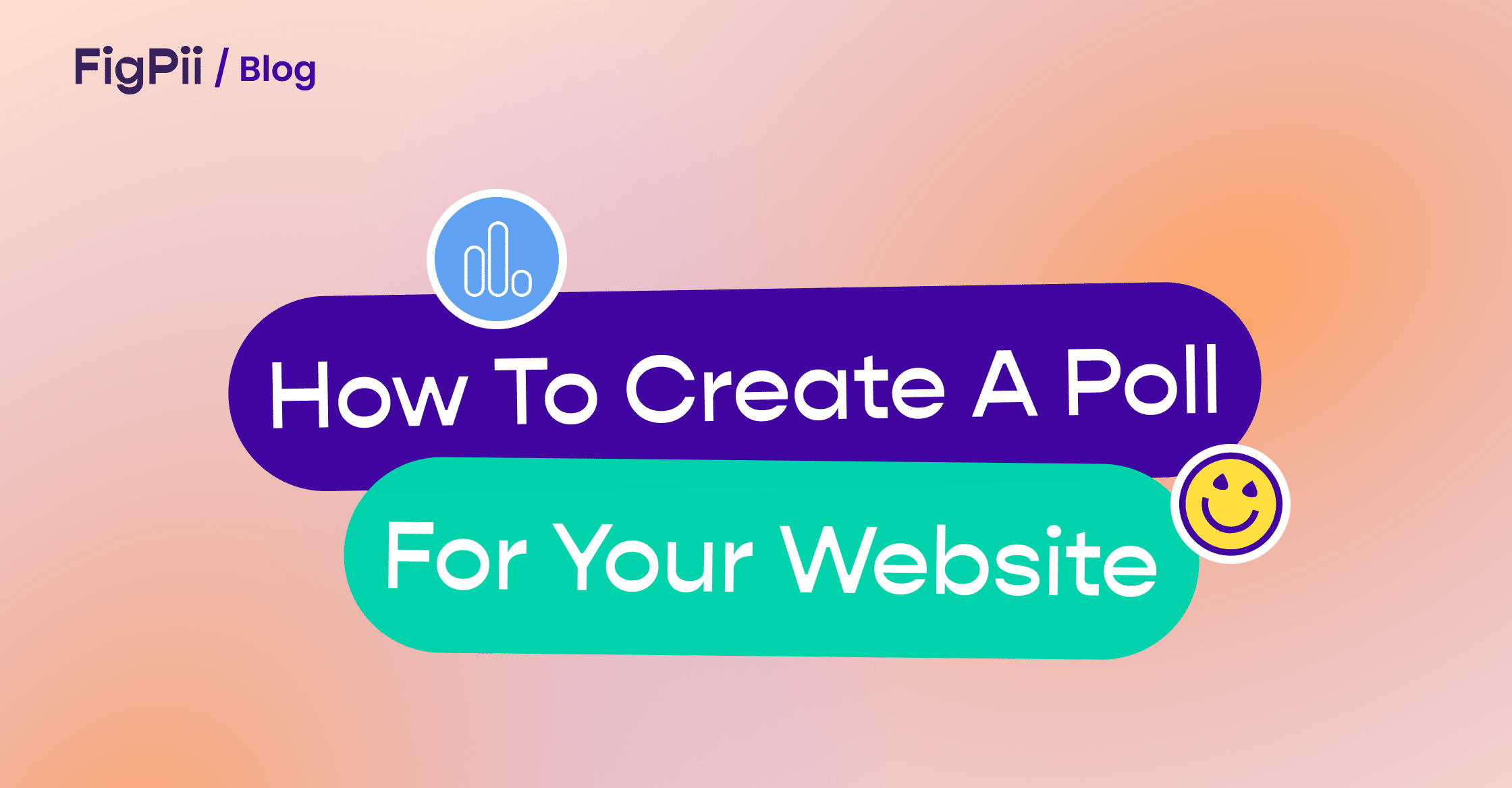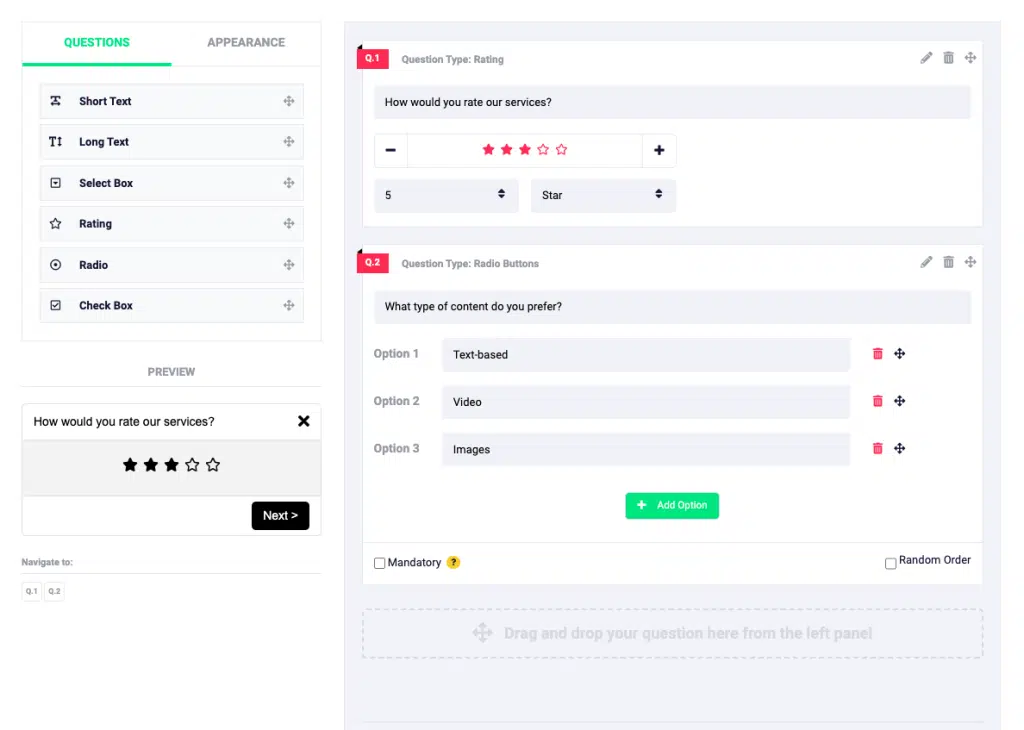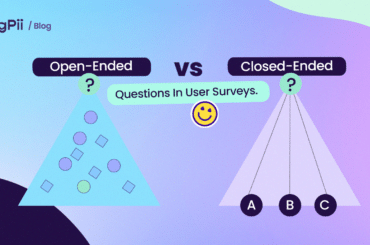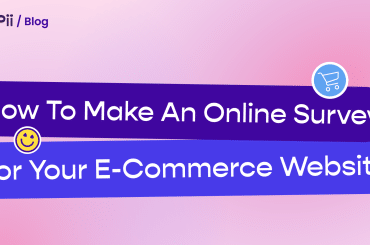If you’re looking for a way to increase engagement on your website, why not add a poll?
Polls are a great way to get your readers involved with the content on your site. When you create a poll, you can ask questions and get answers from them. They can also give their opinions and feedback on various topics.
That said, since you can use polls in so many scenarios, it’s easy to get carried away when creating one. It’s essential to keep your target audience in mind, first and foremost.
So what are you waiting for? Get started with this guide on how to create online polls:
Before we start, let’s examine what a poll is and why you should create one.
Polling is a way of gathering opinions from people through a voting system. It is used in many areas like politics, business, healthcare, and more.
You can use them to get feedback from users who have already interacted with your product or service. For example, to gather information about how satisfied your customers are with the product or service you offer them.
Why do I need a poll?
There are many reasons why you should create polls on your site.
Here are just a few reasons for making polls:
- Polling helps you understand what your visitors think about certain topics. This type of customer feedback can give you ideas for future articles or other ways to improve your website.
- Quick polls help you receive instant feedback and discover what people like most about your website, which can help you identify areas where improvements are needed.
- People like taking polls. They’re fun and engaging! It’s easy to see how much time people spend on the page while taking them (which means they’re reading).
If done right, polls can help improve your products and services by identifying areas where there is room for improvement and help you improve those areas.
Steps to Create a Poll
There are a few ways to create a poll on your website. Here’s a detailed guide:
1. Decide on the type of poll.
The first thing you need to do when creating a poll is to decide what type of poll you need. There are many different types of polls for different purposes and situations.
For example, do you want a simple yes or no answer? Or would you like your visitors to be able to elaborate on their responses? You may also want to include a “none of the above” option, allowing people to select that option if they disagree with the other choices.
Here are some types of polls you can create on your website:
- Open-ended questions: These allow visitors to answer with their answers and comments. They’re great for gathering information and getting feedback from your audience.
- Multiple answers/ multiple choice questions: These give visitors a set of options they can choose from to answer your poll’s question.
- Rating questions: These allow visitors to rate items on a scale of one to five stars or other ratings (such as thumbs up or thumbs down). These work well for rating products or services, but they only offer a little room for visitor input beyond the rating itself.
Different types of polls serve different purposes.
For example, a multiple-choice question would be appropriate if you have a blog post about dogs and their owners and want to know how many people have dogs versus cats as pets.
However, if you wish for feedback on which breeds were most popular among those who owned both types of animals (or even if they owned no animals), then a rating scale would be better suited for this purpose.
Here’s how Sephora runs “This” or “That” polls on its Instagram handle (you can emulate this approach for your on-site polls too).
(Source)
Apart from gathering free user research, Sephora is also making the audience say ‘yes’ to their products. And psychologists suggest that people are more likely to convert if they make several such micro-commitments.
2. Research and plan the subject of the poll
You want to ensure that whatever subject you choose will be interesting enough to get people’s attention while still being relevant to your business and its products or services.
Try to choose something that relates directly to something else on your website so that users will know what they’re answering when they vote on it.
Once you have decided on a topic, it’s time to plan your questions.
Keep in mind that people tend to respond more positively when they are asked about themselves. For example: “What’s your favorite color?” or “Would you rather go camping or on vacation?”
Avoid asking open-ended questions such as “How do you feel about something?” or “What do you think about this?” People may only be able to answer those questions after knowing more about the subject matter first.
When creating your poll, include an option for respondents who don’t know how they feel about something or prefer not to answer at all. Make sure that these options are clearly labeled so that users won’t overlook them while answering their questionnaires.
3. Assess your target audience and their needs.
When you’re creating a poll, one of your first steps should be to assess your target audience and their needs.
If you’re unsure who your target audience is, look at your website analytics to see who visits it most often.
For example, if you’re creating a poll to raise money for charity, you want to know what type of information your donors are looking for before they donate. Suppose you’re trying to get people involved with a political cause or local community project. In that case, you’ll want to know what kind of involvement these people have had with similar projects so that you can design your site accordingly.
The more specific you get with these questions, the better your chance of getting useful results!
Here are some tips to help you assess your target audience and their needs:
- Ask yourself these questions: What do my customers want? What do my customers need? What do my customers want me to do for them? (i.e., what does each customer want from me?)
- Identify your core demographic: Who is most likely to visit your website? What do they like? What do they dislike? Do they have any commonalities that can be used when creating a poll?
- Research other websites in your field: Find out what kinds of polls they use, how often, and why. This will allow you to better understand how people in your industry respond to polls and what types of questions generate the best results from them.
- Look at past data: You can use tools such as Google Analytics or other tools that can provide insight into who is visiting your site, where they are coming from, and what they are doing when they visit. You can even segment out specific groups by demographics, such as age range or gender, to determine exactly who your target audience is.
You can also use your initial polls to filter your target market and then create your next polls based on the answers you receive.
Pro Tip: Create several different types of polls using different formats and topics so that you can test which ones work best for your intended audience.
4. Decide on the intention of the poll.
The next step is to decide on the intention of the poll.
Is it for fun? To get feedback? To promote a product or service?
Or are you trying to get more people involved in a certain topic? If it’s the latter, then you might want to consider making a voting requirement more lenient so that more people can participate.
For example, in this exit pop-up poll, the company is trying to gauge why a website visitor is bouncing back from their website without taking action.
Now, let’s look at this case study.
The Art of Medicine pharmacy was compounding its own male hair loss solution and wanted to test the market. However, their budget was only up to $100.
In order to test the market for their new formula, they decided to run an Instagram campaign. They designed a custom graphic, set up and optimized the Interactive Poll, and ran the initial campaign for $75 for five days.
Their initial target was males aged 24 to 45 who lived within 35 miles of Philadelphia. And to appeal to their target audiences, they also used specific hair loss interest keywords in their targeting.
Thanks to their market research and careful consideration of the questions they wanted to ask, they received 1,254 total poll responses and 39,608 impressions in their target group.
(Source)
Let’s discuss in detail some of the many reasons why you might want to create a poll for your website:
- Information Gathering: You can use polls to collect data from your users. For example, if you have a blog post on your site about a new product or service, you can ask readers if they would be interested in signing up for more information about that product or service. If they answer “yes,” then you can send them an email with more information about that topic.
- Customer Satisfaction: You can use polls to ask customers how satisfied they are with their experience with your company. This type of poll is particularly useful for businesses that offer products or services over the phone or online because it gives you valuable information about how those interactions are going.
- Marketing Research: You can use polls to get feedback on new ideas before implementing them. For example, if you want to launch a new product or service but aren’t sure how popular it will be with consumers, then running a poll before launching it is an excellent way to find out if there’s enough interest for your product or service.
- To increase traffic: By creating an interesting question that gets people talking about your site, you could end up with more visits than usual.
5. Choose a tool to create the poll.
If you want to create a poll for your website visitors, there are many ways to do so. The best way to create an online poll is to use a polling tool that can be embedded on your site.
These can be good choices becausze they have simple interfaces and don’t require much technical knowledge.
For example, tools like FigPii come with a drag-and-drop builder to create on-site polls and surveys to gather customer opinion data.
You can create a poll on a single page on your site, such as the homepage and cart, or across your site. You can also create a poll on a group of pages, like all your product pages or blog posts.
FigPi also allows you to collect feedback from visitors coming to your site from specific sources, such as email, Google organic, and paid campaigns. This will help you understand what different people think about your business. The advanced targeting feature lets you create and launch polls for different traffic sources.
Other popular feedback and polling tools include Typeform, SurveyMonkey, HubSpot, and more. If you aim to create simple online polls and receive quick poll results, you can also use an online poll maker like Google Forms.
6. Set a time limit for the poll.
You’ll have to decide what purpose you’re using the poll for and then come up with an appropriate time limit.
If you’re trying to collect information, then use a longer time period so that more people will see it and have a chance to respond. If you’re looking for immediate results, then a shorter time period might be better.
When deciding how long to leave your poll open, consider how much time people need to answer the questions and what kind of results you’re looking for. The longer the time limit is, the more accurate the results will be.
Experts from Chicago Web design agency agree that you should also consider how much effort it will take for people to fill out your poll and how many additional steps there are between finding it and actually taking part in it (such as having an account)..
Here’s an example of a Facebook poll from Smart Rota that only allows you to vote for a certain amount of time:
(Source)
7. Design your poll to match your website.
Your poll should match the look and feel of your site so that it doesn’t stand out as being different.
For example, if you have a colorful website, you may want to consider making your poll more colorful.
If you have a minimalist design, then keep the colors muted and simple.
If you’ve got an ecommerce site with a lot of white space and a clean design, then you’ll want to keep the design of your poll simple too.
You may also include some branding elements from your company in the design of your poll, such as logos or other branding images that match those used on other pages on your website.
To see an example of how this can work in practice, check out Google Meets’ on-site poll below:
(Source)
The on-site poll uses the brand’s logo and a muted design that aligns with their website. This makes it easy for visitors to recognize that they’re still on Google’s website and not being taken away from their current experience.
Don’t forget to align the text on your website so it matches up with the style and tone of the rest of the content. For example, if you have a formal brand, use a formal font such as Times New Roman or Arial for your poll questions. If you have an informal brand, use casual fonts like Comic Sans or Helvetica for your questions.
Let’s make a poll to run on our websites!
This concludes our post on how to create a poll for your website. As you can see, it’s pretty easy to do so with a website poll tool. Whether you want to collect info from visitors, let them vote on something, or just get feedback from them, your website can be the portal for putting polls front and center.
So, the next time you want your audience to voice their opinions, don’t let them get lost in the shuffle – create a poll they can’t miss.









